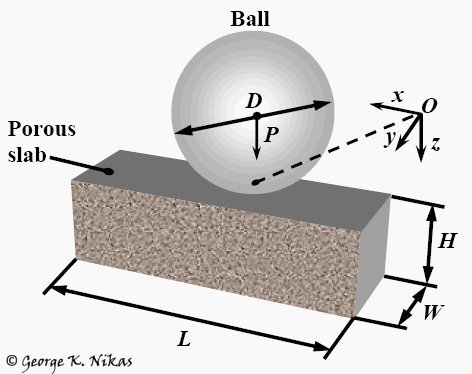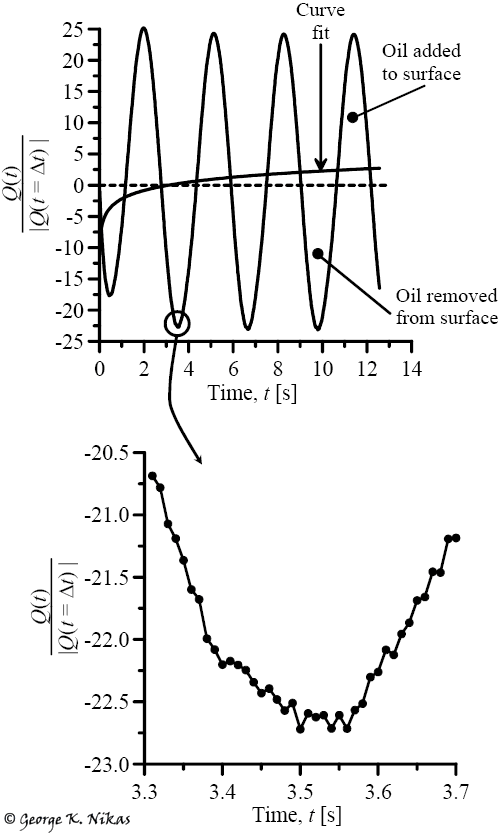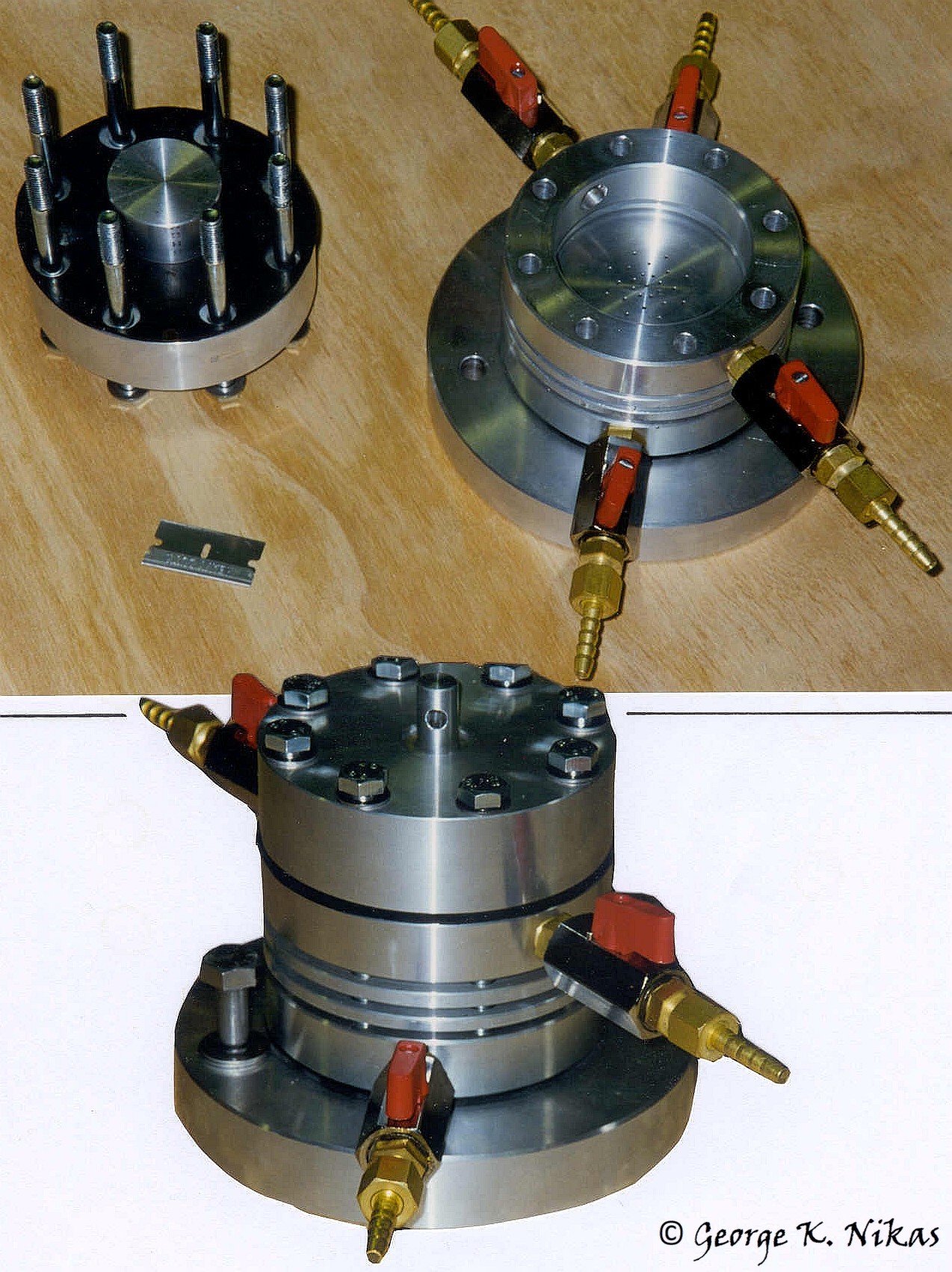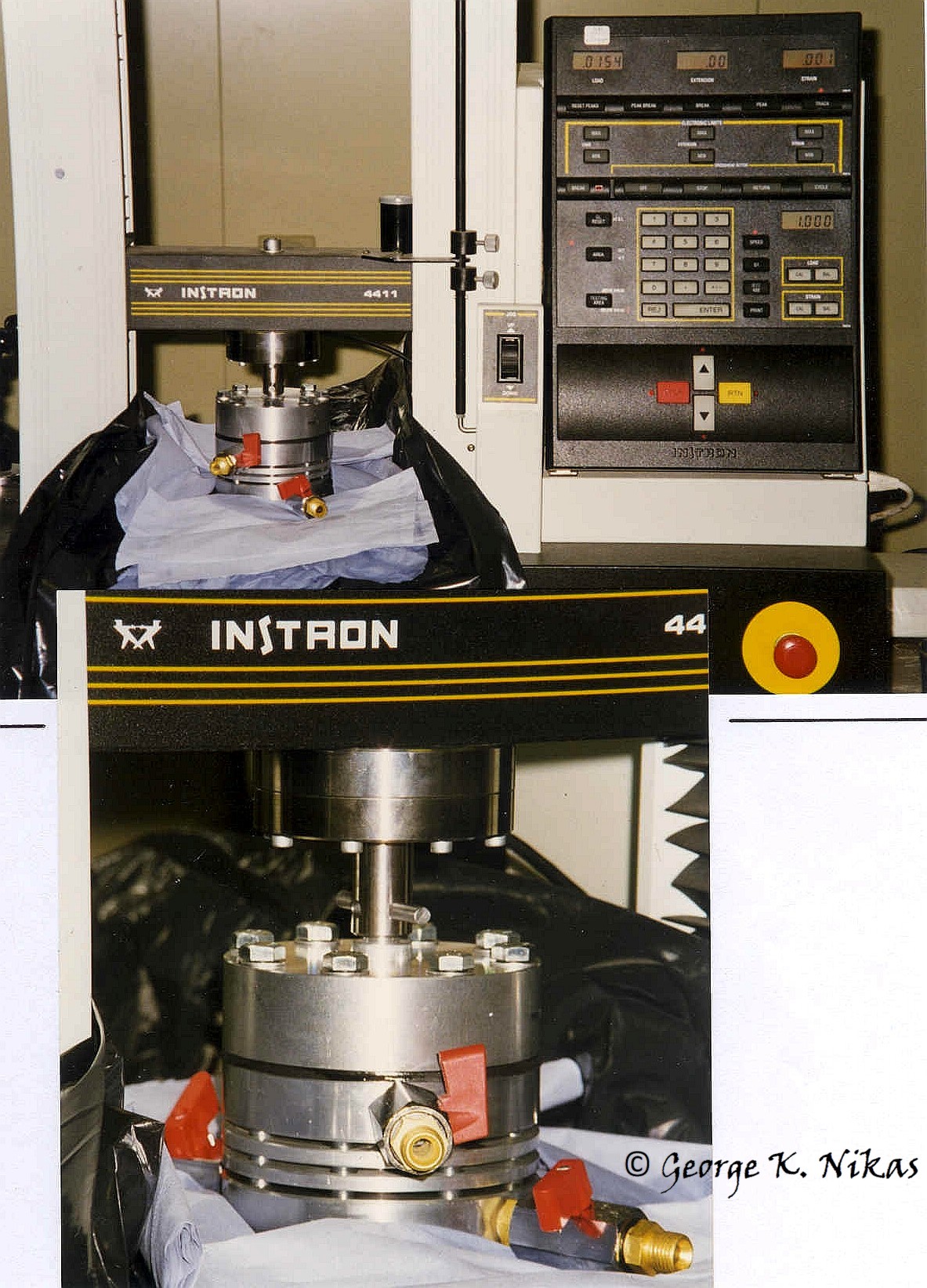Project: A study of lubrication mechanisms using 2-phase fluids with porous bearing materials.
Sponsor: Engineering and Physical Sciences Research Council
![]() (Grant
GR/K 89658)
(Grant
GR/K 89658)
Researcher: George K. Nikas (Imperial College London, Mechanical Engineering Department).
Principal investigator and supervisor: Dr Richard Sayles (Imperial College London, Mechanical Engineering Department).
Project duration: 12 months (1997-1998).
Project cost: £46,551
Final report: PDF copy available to download.
Related computer software: program POROUS. Performance analysis of porous bearing materials saturated with oil containing small particles. Written in Fortran. Code length: 365 lines. Latest version: 1.5.1.
Summary
The concept this project aimed to investigate was the enhancement of lubrication of bearings by using a secondary particulate phase in lubricants, in combination with porous bearing materials (bearing cages). The particles are to act as one-way valves, obstructing lubricant flow into the pores of the porous bearing surfaces during a load decrease, and allowing for lubricant stored inside the pores to be released, following a load increase in the contact. This way the contact is to be continuously replenished, allowing for improved lubrication and thus reduced friction and wear. The author has constructed a theoretical model, based on the theory of three-dimensional consolidation, applied to rolling element bearing cages. The simulation refers to the lubrication of a porous slab under dynamic loading conditions, using a 2-phase lubricant (liquid phase + small and soft particles). The model is to be applied in the case where the bearing cage is of a porous material. A computer simulation shows that the concept works under smooth loading conditions (for example, sinusoidal loading), but only for a limited period of time because the contact becomes eventually starved. In order to overcome the time constraint, the author has suggested a micro-engineered assembly, which, if feasible to be manufactured, is a means of making the concept work efficiently.
The experimental part of the project involved the construction of a rig to study the application of the concept under essentially static loading (the load changes very slowly). The experiments showed that the concept works in this rather simplified case.
In conclusion, the research showed that there may be a potential in applying the concept in practice and it would be interesting to construct or modify a bearing cage according to the guidelines and results of this work. The theoretical simulation has reached an acceptable level of completeness and it remains to be tested under real working conditions.
Some figures from this work
The theoretical model is chosen to comprise a ball on a porous slab, as depicted in Fig. 1. The slab is made of isotropic, porous material, and is, initially, completely saturated with oil. The ball is loaded by a normal, oscillating load P, and any pores contained in the contact circle of the ball and the slab are assumed blocked by platelets trapped between the two counterfaces. Thus, the said pores are impervious. The distribution of pores on the upper and lower surface of the slab is assumed random.

Fig. 1. Theoretical model: solid ball in contact with a porous, oil-saturated slab.
Figure 2 shows the (normalised) quantity of oil exchanged through the pores of the upper surface of the slab (upper graph) for sinusoidal load P. Looking at the fitting curve, it is clear that lubrication on the surface of the slab is improved by the oil exuded through the pores of the slab in time. The lower graph in Fig. 2 shows an important detail: the micro-undulations in oil delivery are caused by the dynamic opening and closing of the surface pores by the platelets.

Fig. 2. Normalised quantity of oil exchanged through the pores of the upper surface of the slab (upper graph) for sinusoidal load P. The lower graph shows the micro-undulations in oil delivery, caused by the dynamic blockage of pores by platelets.
Similarly to Fig. 2, detailed results are presented in the paper about the effects of the maximum contact load, size and number of pores of the porous medium, elastic modulus of the medium, and the viscosity of the oil used to carry the particulate phase, on the lubrication performance of the system.
The experimental part of this study involved the design and construction of a rig to study the concept of lubrication enhancement macroscopically. Some pictures of the rig are shown in Fig. 3. The rig contains a porous plate fixed between two oil reservoirs. Only the top reservoir contains a known amount of the secondary particulate phase. This reservoir has pressure exerted within it by a solid piston, which is actuated by an Instron testing machine via a load cell. The Instron machine allows for both tension and compression to be applied accurately, and is linked to a computer interface with a graph plotter for easy data collection. Thus, the speed and displacement limits of the piston are set and the resultant load is measured.


Fig. 3. Test rig (designed by research student Anthony Gibson-Watt at Imperial College London).
The experimental results confirmed the trends revealed by the theoretical model and proved the potential of this novel lubrication method.
Publication of the author related to this work
Nikas, G. K., Sayles, R. S. A study of lubrication mechanisms using two-phase fluids with porous bearing materials. Proceedings of the Institution of Mechanical Engineers, Part J: Journal of Engineering Tribology, 2008, 222(6), 771-783.